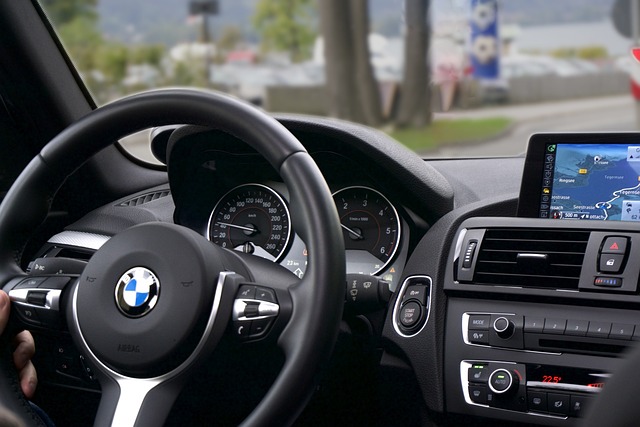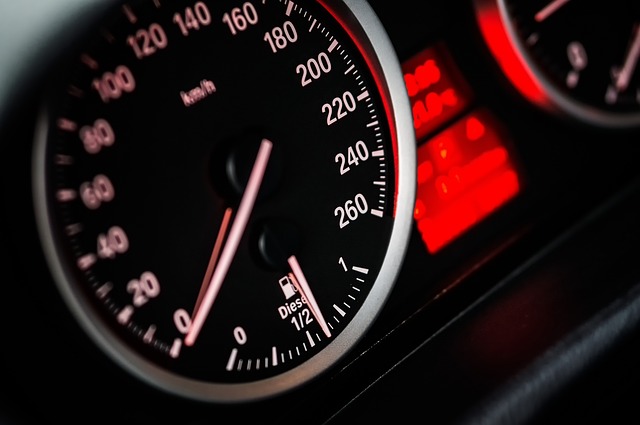Looking to register your car in California? This guide breaks down the process step-by-step, from understanding key requirements to submitting your application. Ensure you have all necessary documents, including proof of insurance and ownership. Verify your vehicle’s Identification Number (VIN) using a trusted DMV VIN verifier to ensure accuracy. Follow these straightforward steps for a smooth car registration experience in the Golden State.
- Understand California Car Registration Requirements
- Gather Necessary Documents for Car Registration
- Visit the DMV or Use Online Services for Registration
- Verify Vehicle Identification Number (VIN) Accuracy
- Complete and Submit the Registration Application Form
Understand California Car Registration Requirements

Before registering your car in California, it’s crucial to understand the state’s specific requirements for vehicle registration. The California Department of Motor Vehicles (DMV) mandates that all vehicles operated on public roads be properly registered and have an up-to-date safety inspection. One key aspect is ensuring the accuracy of your Vehicle Identification Number (VIN). Utilize a trusted DMV VIN verifier or mobile vin verifier to check for any discrepancies before proceeding with registration.
A valid and accurate VIN inspection is essential, as it helps in verifying ownership and ensuring the vehicle meets all safety standards. This process can be conveniently done through a mobile vin verification service, making it easier to navigate the registration process. By fulfilling these requirements, you’ll be one step closer to legally registering your car in California.
Gather Necessary Documents for Car Registration

Before you start the car registration process in California, it’s crucial to gather all the necessary documents. This includes your vehicle’s Registration Application (Form DV304), which can be obtained from the California Department of Motor Vehicles (DMV) or online. Additionally, you’ll need proof of insurance, a valid driver’s license, and the Certificate of Title (if applicable). The Vehicle Identification Number (VIN) is another essential piece of information; this unique 17-character code can be found on the vehicle’s registration label or in its owner’s manual. For added convenience, many individuals opt for a mobile VIN inspection or use a DMV VIN verifier to streamline the initial verification process.
Furthermore, if you’re purchasing a used car, you might require additional documents like the previous owner’s signature and a bill of sale. It’s also wise to check with your local DMV branch for any specific requirements, as some areas may have further documentation needs. Ensure all forms are accurately filled out to avoid delays in the registration process.
Visit the DMV or Use Online Services for Registration

In California, registering your car involves either visiting the Department of Motor Vehicles (DMV) or utilizing their online services. For many, the DMV can be a hassle, with long lines and crowded waiting areas. However, it’s crucial for ensuring all paperwork is accurate and completed correctly. The DMV offers comprehensive assistance for new registrations, title transfers, and more.
An alternative to in-person visits, especially beneficial for folks with busy schedules or mobility issues, is using the DMV’s online services. This includes features like a VIN verifier, which allows you to quickly validate your vehicle’s unique identifier (VIN) for inspection purposes. Some even offer mobile vin verification options, making the process from start to finish more convenient and efficient.
Verify Vehicle Identification Number (VIN) Accuracy

Before you begin the registration process, it’s crucial to ensure your vehicle’s Vehicle Identification Number (VIN) is accurate. This unique 17-character code is essential for identifying your car and ensuring a smooth registration experience with the California DMV. Double-check that the VIN displayed on your vehicle’s title or registration documents matches exactly what’s listed in your ownership records.
One effective way to verify the VIN is by using a mobile vin verifier app, which allows for quick and convenient checking. These apps, often employing GPS technology, can cross-reference your VIN against national databases, providing instant validation. Alternatively, consider scheduling a mobile vin inspection where a professional will visit you to confirm the number, offering peace of mind that every detail is correct before submitting your registration paperwork.
Complete and Submit the Registration Application Form

To register your car in California, the first step is to complete and submit the Registration Application Form. This form requires detailed information about your vehicle, including its make, model, year, and unique Vehicle Identification Number (VIN). The VIN is a crucial piece of data that allows the DMV (Department of Motor Vehicles) to verify the vehicle’s history and ensure it complies with all regulations.
Using tools like a DMV vin verifier or mobile vin verification services can streamline this process. These services enable you to quickly and easily obtain important information about your car’s history, including accident reports, odometer readings, and previous owners. Once you have accurately completed the form, submit it along with the required fees to initiate the registration process.
Registering a car in California involves understanding state requirements, gathering essential documents, and accurately verifying your vehicle’s Identification Number (VIN). By completing these steps, whether through visiting a DMV office or utilizing online services, you ensure compliance with local laws. Remember to use a reliable dmv VIN verifier to maintain the integrity of your vehicle’s information throughout the registration process.



